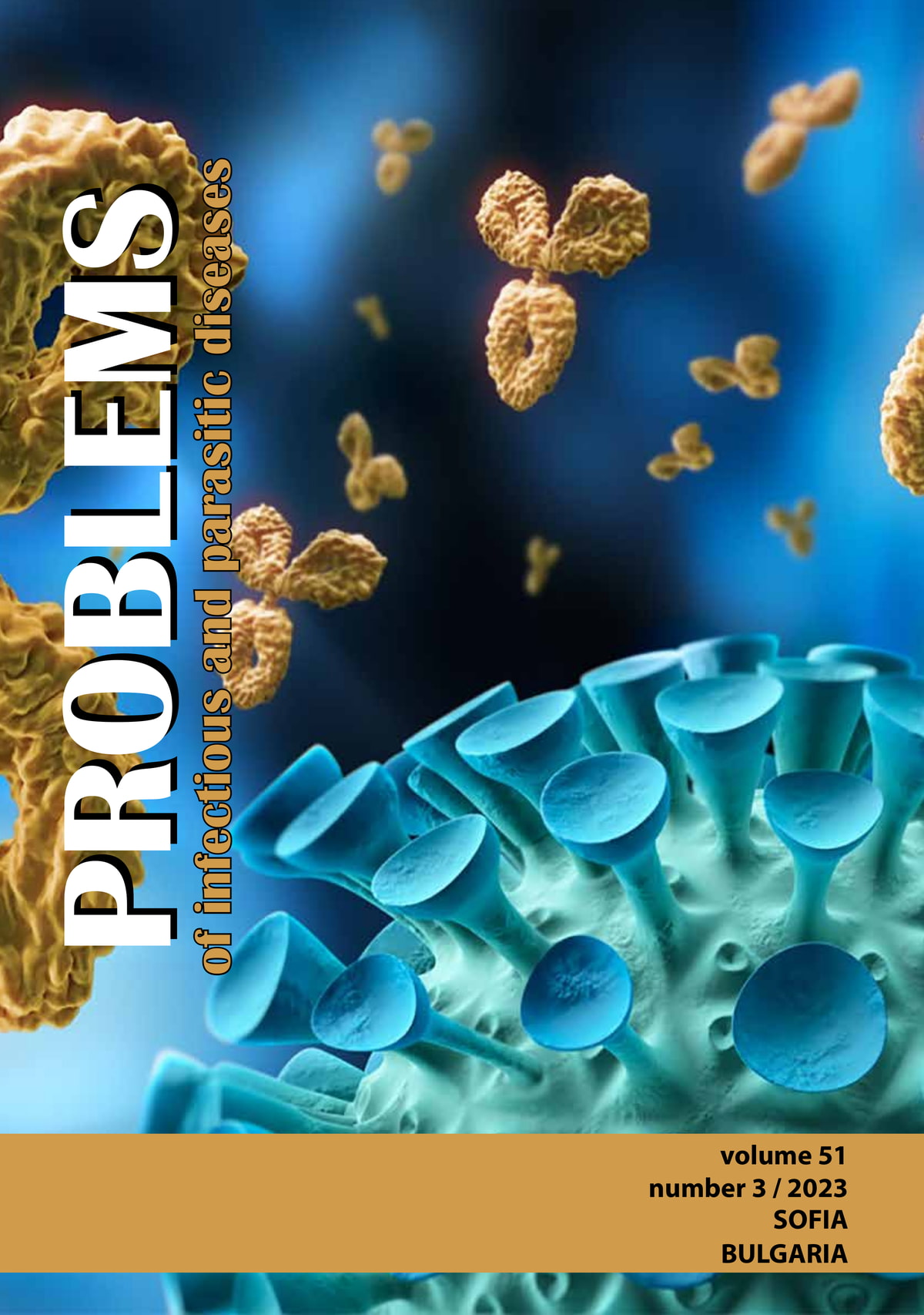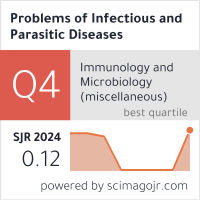DECODING MICROBIOME DYSBIOSIS THROUGH METAGENOMIC ALPHA DIVERSITY
IMPLICATIONS FOR SARCOIDOSIS ETIOLOGY
DOI:
https://doi.org/10.58395/fmx7px98Keywords:
microbiome, dysbiosis, blood microbiome, sarcoidosis, richness, evenness, alpha abundanceAbstract
Background: Sarcoidosis is a chronic inflammatory disease that can affect multiple organs. The aetiology of sarcoidosis is not fully understood, but there is increasing evidence that the microbiome may play a role. The blood microbiome is a collection of microorganisms that live in the bloodstream. It is a complex and dynamic community that is influenced by a variety of factors, including the host’s lifestyle and pathology. Recent studies have shown that people with sarcoidosis have alterations in their blood microbiome. These alterations include changes in the diversity, richness, and evenness of the microbial community. The abundance measures by which the blood microbiome diversity may detect instances of dysbiosis related to sarcoidosis aetiology. It should be clearly distinguished from microbiome changes related to unspecific inflammation or sepsis. However, the available evidence suggests that the microbiome may be a promising target for therapeutic interventions.
Aim: The primary goal of this review was to assess and compare the existing metrics of microbiome composition and diversity as established by metagenomic analyses. Additionally, we aim to elucidate the potential causal relationship between these measures, the phenomenon of blood microbiome dysbiosis and the pathogenesis of sarcoidosis.
Conclusion: In the present review, we investigated alpha diversity measures as characteristics of microbiome communities, examining their potential as indicators of dysbiosis, and the probablemechanisms of microbiome participation. A descriptive qualitative comparison was conducted between lung microbiome data of sarcoidosis patients and blood microbiome data of healthy adults. This comparison elucidates common taxa between the two microbiomes and identifies taxa potentially involved in sarcoidosis.
Downloads
References
Statement on Sarcoidosis. Am J Respir Crit Care Med 1999;160(2):736–755. https://doi.org/10.1164/ajrccm.160.2.ats4-99
Arkema EV, Cozier YC. Epidemiology of sarcoidosis: current findings and future directions. Ther Adv Chronic Dis 2018;9(11):227–240. https://doi.org/10.1177/2040622318790197
Grutters JC, Van Den Bosch JMM. Corticosteroid treatment in sarcoidosis. Eur Respir J 2006;28(3):627–636. https://doi.org/10.1183/09031936.06.00105805
Gibson GJ, Prescott RJ, Muers MF, et al. British Thoracic Society Sarcoidosis study: effects of long term corticosteroid treatment. Thorax 1996;51(3):238–247. https://doi.org/10.1136/thx.51.3.238
Potgieter M, Bester J, Kell DB, et al. The dormant blood microbiome in chronic, inflammatory diseases. Danchin ProfA. ed. FEMS Microbiol Rev 2015;39(4):567–591. https://doi.org/10.1093/femsre/fuv013
Gupta S, Shariff M, Chaturvedi G, et al. Comparative analysis of the alveolar microbiome in COPD, ECOPD, Sarcoidosis, and ILD patients to identify respiratory illnesses specific microbial signatures. Sci Rep 2021;11(1):3963. https://doi.org/10.1038/s41598-021-83524-2
Zimmermann A, Knecht H, Häsler R, et al. Atopobium and Fusobacterium as novel candidates for sarcoidosis-associated microbiota. Eur Respir J 2017;50(6):1600746. https://doi.org/10.1183/13993003.00746-2016
Panaiotov S, Filevski G, Equestre M, et al. Cultural Isolation and Characteristics of the Blood Microbiome of Healthy Individuals. Adv Microbiol 2018;08(05):406–421. https://doi.org/10.4236/aim.2018.85027
Panaiotov S, Hodzhev Y, Tsafarova B, et al. Culturable and Non-Culturable Blood Microbiota of Healthy Individuals. Microorganisms 2021;9(7):1464. https://doi.org/10.3390/microorganisms9071464
Tsafarova B, Hodzhev Y, Yordanov G, et al. Morphology of blood microbiota in healthy individuals assessed by light and electron microscopy. Front Cell Infect Microbiol 2023;12:1091341. https://doi.org/10.3389/fcimb.2022.1091341
Schupp JC, Vukmirovic M, Kaminski N, et al. Transcriptome profiles in sarcoidosis and their potential role in disease prediction. Curr Opin Pulm Med 2017;23(5):487–492. https://doi.org/10.1097/MCP.0000000000000403
Franzosa EA, Morgan XC, Segata N, et al. Relating the metatranscriptome and metagenome of the human gut. Proc Natl Acad Sci 2014;111(22). https://doi.org/10.1073/pnas.1319284111
Quince C, Walker AW, Simpson JT, et al. Shotgun metagenomics, from sampling to analysis. Nat Biotechnol 2017;35(9):833–844. https://doi.org/10.1038/nbt.3935
Goodrich JK, Di Rienzi SC, Poole AC, et al. Conducting a Microbiome Study. Cell 2014;158(2):250–262. https://doi.org/10.1016/j.cell.2014.06.037
Peters BA, Dominianni C, Shapiro JA, et al. The gut microbiota in conventional and serrated precursors of colorectal cancer. Microbiome 2016;4(1):69. https://doi.org/10.1186/s40168-016-0218-6
Cox MJ, Cookson WOCM, Moffatt MF. Sequencing the human microbiome in health and disease. Hum Mol Genet 2013;22(R1):R88–R94. https://doi.org/10.1093/hmg/ddt398
He Y, Li J, Yu W, et al. Characteristics of lower respiratory tract microbiota in the patients with post-hematopoietic stem cell transplantation pneumonia. Front Cell Infect Microbiol 2022;12:943317. https://doi.org/10.3389/fcimb.2022.943317
He Y, Yu W, Ning P, et al. Shared and Specific Lung Microbiota with Metabolic Profiles in Bronchoalveolar Lavage Fluid Between Infectious and Inflammatory Respiratory Diseases. J Inflamm Res 2022;Volume 15:187–198. https://doi.org/10.2147/JIR.S342462
Manichanh C, Borruel N, Casellas F, et al. The gut microbiota in IBD. Nat Rev Gastroenterol Hepatol 2012;9(10):599–608. https://doi.org/10.1038/nrgastro.2012.152
Dabdoub SM, Tsigarida AA, Kumar PS. Patient-specific Analysis of Periodontal and Peri-implant Microbiomes. J Dent Res 2013;92(12_suppl):168S-175S. https://doi.org/10.1177/0022034513504950
Jost L. Entropy and diversity. Oikos 2006;113(2):363–375. https://doi.org/10.1111/j.2006.0030-1299.14714.x
David LA, Materna AC, Friedman J, et al. Host lifestyle affects human microbiota on daily timescales. Genome Biol 2014;15(7):R89. https://doi.org/10.1186/gb-2014-15-7-r89
Caporaso JG, Lauber CL, Costello EK, et al. Moving pictures of the human microbiome. Genome Biol 2011;12(5):R50. https://doi.org/10.1186/gb-2011-12-5-r50
Grumaz S, Stevens P, Grumaz C, et al. Next-generation sequencing diagnostics of bacteremia in septic patients. Genome Med 2016;8(1):73. https://doi.org/10.1186/s13073-016-0326-8
Dickson RP, Erb-Downward JR, Martinez FJ, et al. The Microbiome and the Respiratory Tract. Annu Rev Physiol 2016;78(1):481–504. https://doi.org/10.1146/annurev-physiol-021115-105238
Salisbury ML, Han MK, Dickson RP, et al. Microbiome in interstitial lung disease: from pathogenesis to treatment target. Curr Opin Pulm Med 2017;23(5):404–410. https://doi.org/10.1097/MCP.0000000000000399
Yin L, Wan Y-D, Pan X-T, et al. Association Between Gut Bacterial Diversity and Mortality in Septic Shock Patients: A Cohort Study. Med Sci Monit 2019;25:7376–7382. https://doi.org/10.12659/MSM.916808
Khosravi A, Mazmanian SK. Disruption of the gut microbiome as a risk factor for microbial infections. Curr Opin Microbiol 2013;16(2):221–227. https://doi.org/10.1016/j.mib.2013.03.009
Musso G, Gambino R, Cassader M. Interactions Between Gut Microbiota and Host Metabolism Predisposing to Obesity and Diabetes. Annu Rev Med 2011;62(1):361–380. https://doi.org/10.1146/annurev-med-012510-175505
Blander JM, Longman RS, Iliev ID, et al. Regulation of inflammation by microbiota interactions with the host. Nat Immunol 2017;18(8):851–860. https://doi.org/10.1038/ni.3780
Dominy SS, Lynch C, Ermini F, et al. Porphyromonas gingivalis in Alzheimer’s disease brains: Evidence for disease causation and treatment with small-molecule inhibitors. Sci Adv 2019;5(1):eaau3333. https://doi.org/10.1126/sciadv.aau3333
Boyanov I, Tsafarova B, Hodzhev Y, Panayotov S. Relationship between gut and oral microbiome: potential influence of the dysbiotic oral microbiome in periodontitis, General Medicine, in press.
Becker A, Vella G, Galata V, et al. The composition of the pulmonary microbiota in sarcoidosis – an observational study. Respir Res 2019;20(1):46. https://doi.org/10.1186/s12931-019-1013-2
Clarke EL, Lauder AP, Hofstaedter CE, et al. Microbial Lineages in Sarcoidosis. A Metagenomic Analysis Tailored for Low–Microbial Content Samples. Am J Respir Crit Care Med 2018;197(2):225–234. https://doi.org/10.1164/rccm.201705-0891OC
Païssé S, Valle C, Servant F, et al. Comprehensive description of blood microbiome from healthy donors assessed by 16S targeted metagenomic sequencing: BLOOD MICROBIOME 16S METAGENOMIC SEQUENCING. Transfusion (Paris) 2016;56(5):1138–1147. https://doi.org/10.1111/trf.13477
Jie Z, Xia H, Zhong S-L, et al. The gut microbiome in atherosclerotic cardiovascular disease. Nat Commun 2017;8(1):845. https://doi.org/10.1038/s41467-017-00900-1
Zhang X, Zhang D, Jia H, et al. The oral and gut microbiomes are perturbed in rheumatoid arthritis and partly normalized after treatment. Nat Med 2015;21(8):895–905. https://doi.org/10.1038/nm.3914
McIntyre CW, Harrison LEA, Eldehni MT, et al. Circulating Endotoxemia: A Novel Factor in Systemic Inflammation and Cardiovascular Disease in Chronic Kidney Disease. Clin J Am Soc Nephrol 2011;6(1):133–141. https://doi.org/10.2215/CJN.04610510
Downloads
Published
Issue
Section
License
Copyright (c) 2024 Yordan Hodzhev, Borislava Tsafarova, Vladimir Tolchkov, Prof. Dr. Vania Youroukova, Dr. Silvia Ivanova, Prof. Dr. Dimitar Kostadinov, Asoc. Prof. Dr. Nikolay Yanev, Prof. Stefan Panaiotov (Author)

This work is licensed under a Creative Commons Attribution 4.0 International License.






